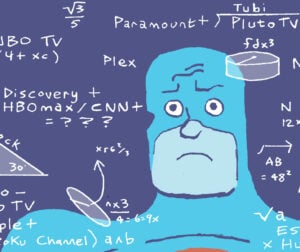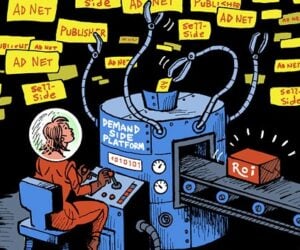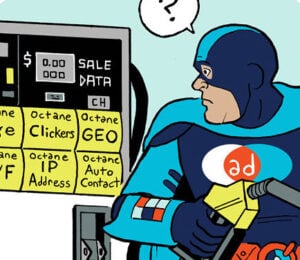Bid collision is a song of the past. Go ahead, use multiple retargeting partners. Just make sure they’re different in kind.
In performance marketing, practices that were once best-in-class can quietly create blind spots. Not because marketers get complacent but because the mechanics underneath strategies invisibly evolve, and the mental models often lag behind.
Almost a decade ago, I wrote a paper warning the industry to beware of bid collision. It made the rounds. And at the time, it was true. Running multiple retargeters across the same user base was a recipe for inefficiency. You were, in theory, bidding against yourself.
But here’s the thing: The landscape shifted. What once was true is not anymore. And the data makes that clear.
The auction model flip that changed everything
So what changed?
Since 2019, the digital ad ecosystem has been playing by new rules. That’s the year first-price auctions became the default, starting with Big Tech and quietly rippling through the rest of the industry.
In this first-price model, the highest bid wins and pays exactly what the bidder offered to pay. No second-price padding. No phantom inflation. No more penalty for running multiple campaigns.
In the old “second-price” world, using a multiple partner strategy was risky. Two bidders working on behalf of the same brand could end up competing against each other, driving up costs without adding value. But in the first-price world, that fear disappears. Having other bidders in the auction doesn’t change what the winner pays.
Bid collision? No longer a factor. Today, independent strategies don’t cannibalize each other. They scale together. And for marketers willing to embrace this new reality, the performance upside is real. But while the downside is removed universally, the upside comes from meeting one critical condition: The targeting mechanisms your partners use must be different in kind.
So what makes partners “different in kind”?
Technology differences matter
Gas vs. electric. Paper or plastic. Debit or credit. Most problems have at least two types of solutions. And each of those solutions has its place because they are different in kind.
The same is true for performance marketing. Let’s look at how it’s evolved over the last two decades. First came business rules: static, manual instructions to define how campaigns should run. You may remember (fondly?) setting a $4 CPM with a frequency cap of five impressions for all users. That’s so 2008!
Next, the current market standard – machine learning – emerged, introducing automation and pattern recognition, but still requiring humans to organize data and periodically retrain models. Finally, deep learning was put to work, a next-generation AI that processes massive volumes of raw and chaotic data in real time, self-learns and self-optimizes toward performance goals.
Deep learning, unlike machine learning, excels at detecting nonobvious converters, addressing complex paths to purchase over time and recommending products a user hasn’t seen but is likely to buy. In fact, 61% of purchases driven by deep learning come from products the user has never viewed before.
When paired with a more conventional partner, deep-learning-powered campaigns compound performance results. They focus on different signals, identify different users that are likely to buy, spot different buying patterns and surface different products. That’s not overlap; that’s layered performance.
You’ve hit the plateau. Now what?
Suppose you’re running a performance campaign focused on conversions. You’re already using dynamic retargeting, arguably the most resilient tactic out there across social, Big Tech platforms and your DSP. You’re hitting your ROAS targets. Everyone’s happy.
Until you’re asked to drive growth.
You have the budget, but efficiency can’t drop, and yet the current campaign has plateaued. It feels like you’ve hit the ceiling. Every attempt to scale up comes with diminishing returns.
In the past, the answer would’ve been: tough luck. But, today, that’s no longer the case.
When advertisers add an independent partner powered by deep learning to their existing performance marketing stack, they see an average 57% increase in retargeting scale at the same ROAS. That means 57% more revenue from retargeting without sacrificing budget efficiency.
The right partner delivers incremental value.
Connect. Combine. Accelerate.
The old logic around bid collision doesn’t apply anymore. In a first-price auction world, retargeting isn’t a zero-sum game; it’s a systems design challenge and an opportunity.
If your partners are different in kind, they won’t compete. They’ll compound. And when one of them brings next-gen tech like deep learning to the table, the result is smarter spend, greater reach and real performance lift.
The growth you’re looking for is still there, just hiding behind an outdated assumption.
“Data-Driven Thinking” is written by members of the media community and contains fresh ideas on the digital revolution in media.
Follow RTB House and AdExchanger on LinkedIn.












